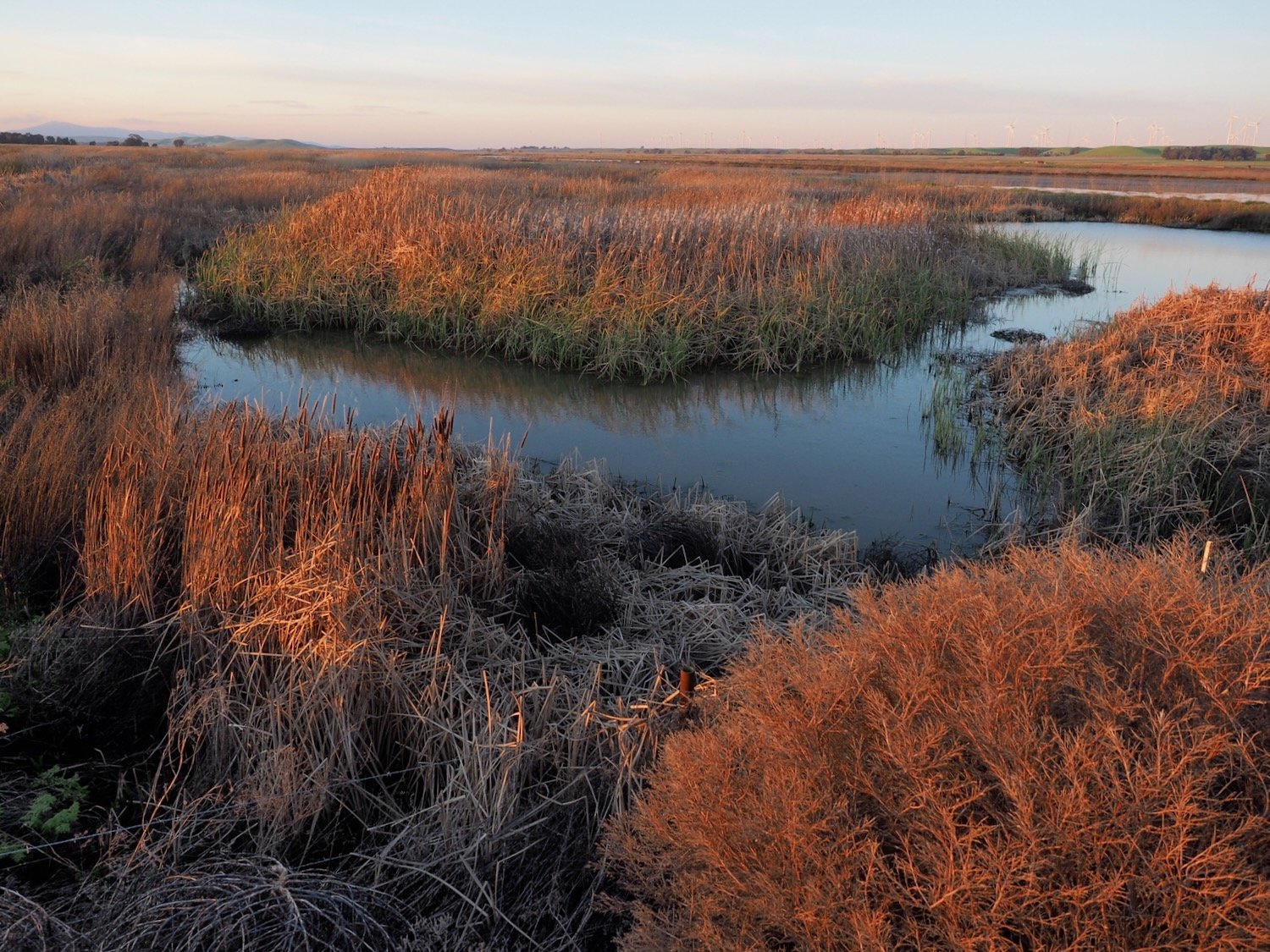The environment is on the ballot this November—and not just in the presidential race.
Amidst a plethora of other measures, Californians will vote on Proposition 4, the so-called climate bond, which would authorize the state to issue $10 billion in bonds for environmental and climate projects—many of which likely won’t be funded while the state faces a massive budget shortfall.
The vast majority of the bond money would go to climate resilience and adaptation—helping Californians prepare for sea-level rise, wildfires, extreme heat, droughts, floods, and all the other present and future impacts of our carbon-heavy lifestyles. (A much smaller portion would be spent on reducing greenhouse gas emissions.) The nine-county Bay Area, which has one-third of the state’s coastline and an estimated $62 billion in at-risk coastal property, is set to receive a significant chunk of those funds. At least 40 percent of the $10 billion must benefit lower-income or especially climate-vulnerable communities.
To see more details on what’s being spent, scroll to the end of the article.
Prominent opponents of Prop. 4 appear to be few, but include state Senate Minority Leader Brian Jones, R-San Diego, and the anti-tax Howard Jarvis Taxpayers Association. They say the state can’t afford to take on any more debt. (Including interest, the total debt to be repaid would be around $16 billion, according to the nonpartisan Legislative Analyst’s Office.) They also point out that the state still has a few billion dollars remaining from prior natural resources and climate bonds. And they criticize Prop. 4 for being—as the Mercury News/East Bay Times editorial board wrote—a “hodgepodge of programs” that “reads like a shopping list more than a sound policy proposal.”
Proponents of the measure, including labor and firefighters’ organizations and more than 180 environmental groups, counter that Prop. 4 will actually save money in the long run. “I consider this a down payment,” Assemblymember Diane Papan, D-San Mateo, tells Bay Nature. She adds that the costs and risks of climate change keep escalating, and that “we definitely have a need for speed.” When the state Legislature voted to place Prop. 4 on the ballot, several Republicans joined almost all the Democrats in support.
Prop. 4 was designed to be far-reaching—a hodgepodge, if you will—and to focus on disaster prevention rather than disaster response, its proponents say. “The broad range of climate risks requires a funding proposition that is broad enough to address all of those risks,” says Joshua Quigley, policy manager for Save The Bay, a nonprofit advocacy group.
What will be funded?
Prop. 4 money would go to various state entities (mostly within the purview of the California Natural Resources Agency), both for state-run activities and to distribute as loans or grants to local governments, Native American tribes, nonprofits, and businesses. The text of Prop. 4 doesn’t name many specific projects for funding. But numerous projects are shovel-ready, just awaiting a cash infusion, advocates say. They’ve got lists at the ready.
Using State Coastal Conservancy data, Save the Bay has identified 37 Bay Area marsh and shoreline restoration projects that need more than a half-billion dollars in funding. These include a so-called “living levee” in North Richmond and preservation of the Newark Baylands, which are threatened by development.
TOGETHER Bay Area, a regional coalition working toward climate resilience and equity in the Bay Area, similarly names projects that Prop. 4 could theoretically make possible, including the preservation of open space in Coyote Valley (south of San Jose), fire relief in state parks, a second wildlife crossing of Highway 17 in the Santa Cruz Mountains, and refurbishment of Bothin Marsh in Mill Valley to fortify it against sea-level rise.
The San Francisco Bay Joint Venture, a public-private partnership that works to preserve and restore regional wetlands, maintains its own list of 490 habitat-related projects in the Bay Area that are planned, in progress, or completed.
Wetlands circa 1800, versus 2015. Vast amounts of San Francisco Bay’s wetlands (shown here in green) have been diked, developed, or turned into grazelands, as maps from the San Francisco Estuary Institute’s 2021 Sediment for Survival report detail.
Why now?
Advocates stress urgency. In a 2022 report, the SF Bay Joint Venture asserted that a 14-fold increase in the pace and scale of tidal restoration projects is needed to meet the Bay’s environmental challenges.
Ariana Rickard, chair of the SF Bay Joint Venture’s policy committee and a program manager at the Sonoma Land Trust, says some of these marsh restoration projects must get under way at once, before they get too expensive and logistically complex to attempt. “We have to get this sediment in place and then it will naturally accrete,” she says. “But it has to be before the sea-level rise just drowns it.”
Is this a green jobs bill in disguise?
Though largely thought of as an environmental bond, Prop. 4 would also create jobs and give a boost to the nascent field of restoration construction. Traditionally, “if you wanted to get involved in restoration, you really had to get into the sciences,” says Mark Cederborg, director of policy and advocacy for the nonprofit Ecological Workforce Initiative, which trains ecological construction workers. Over the past decade or so, however, workers increasingly “make a living doing that type of work.”
“We’re creating a huge number of jobs by pumping money into the construction industry for ecological projects,” Cederborg says. “[Yet] it’s not being promoted as one of the benefits of the climate bond. To me, that is just a huge miss.”
Sara Johnson, executive director of the California Ecological Restoration Business Association, says she’s excited about Prop. 4’s potential, especially if the state allows for substantial private-sector involvement, rather than depending on government agencies and nonprofits alone.
She adds that restoration permitting should be streamlined, noting that it took six years to permit a recent delta smelt habitat restoration project at Lookout Slough in Solano County. “And that was considered an expedited, fast-track permitting process,” Johnson says. (The state has a “Cutting Green Tape” initiative.)
How does it fit into ongoing climate-change efforts?
Californians have been fighting climate change since the mid-20th century, when people first tried to reverse wetland loss, and capped the dumps that lined San Francisco Bay. Incidentally, that work made the shoreline more resilient to sea-level rise. The Bay, which by then had lost roughly 90 percent of its tidal wetlands, now sports 53,000 acres of healthy marsh, according to Save the Bay, though this still falls far short of its 100,000-acre goal (and the low-hanging fruit has been plucked, at this point).
The state started looking in earnest at the future impacts of climate change in the 1990s, according to Louise Bedsworth, executive director at UC Berkeley’s Center for Law, Energy & the Environment. In 2009, the state released its first official climate adaptation strategy.
Since then, state and local lawmakers have passed a slew of laws, both to reduce emissions and to prepare for climate change’s effects. In 2016 and 2018, respectively, voters passed Measure AA, a parcel tax to raise some $500 million for Bay Area wetland restoration, and Proposition 68, which authorized $4.1 billion in bonds for parks, water projects, and climate adaptation statewide.
The federal Bipartisan Infrastructure Law (2021) and Inflation Reduction Act (2022) have brought an additional influx of at least $1.2 billion to the greater Bay Area for nature-related projects, according to Bay Nature’s analysis.
Money has likewise flowed from the state’s general fund. In 2022, a budget surplus year, Governor Gavin Newsom and the legislature agreed to invest some $54 billion over several years to fight climate change.

Those were the flush times. Then came much leaner ones.
Now, with the Legislative Analyst’s Office projecting a state budget deficit of $73 billion, several billion dollars of those climate funds have been cut. The LAO calculates that the state is spending only about half the money on natural resources and environmental protection in 2024–2025 that it did the previous year (though this still exceeds historical levels of funding for those sectors).
It has therefore become harder to get financing for environmental projects, including from two key state agencies that have supported many Bay Area projects. The Wildlife Conservation Board has closed its grant application portal, and the Coastal Conservancy is set to lose almost $400 million from its budget.
Meanwhile, two new state climate programs, the Regional Resilience Planning and Implementation Grant Program and the Adaptation Planning Grant Program, finished only one application round prior to losing their funding, Bedsworth says.
The climate bond, which had been discussed for years before making it to the November ballot, could help offset the budget shortfall. For example, it designates $765 million to the Coastal Conservancy for coastal resilience, including $85 million specifically for Bay Area sea-level rise, flood management, and wetland restoration projects.
Sign up today!

What’s the cost of adapting to climate change (or not)?
If it passes, Prop. 4 would be the largest climate change-related investment in California’s history. In some ways, however, it would be a pittance.
California sea levels are expected to rise between 1.6 feet and 3.1 feet by 2100—and possibly as much as 6.6 feet. In the Bay alone, it will cost roughly $110 billion by 2050 to defend the shoreline from this intrusion, a 2023 report found.
The price of doing nothing, however, may be far higher. A state report projects that climate change could cost California $113 billion annually by 2050. “In areas where we don’t have healthy, restored tidal marshes that can accommodate that rise, you’re going to see significant floods in those communities,” Quigley says. That means homes, businesses, roads and mass transit.
In addition, it’s expected that beaches will erode, groundwater will be contaminated, and healthcare and insurance costs will mount—with lower-income communities and communities of color facing a disproportionate share of the burden.
In Assemblymember Papan’s Peninsula district, highways, Caltrain, wastewater treatment plants, and Fortune 500 companies all line the Bay. “If my district goes underwater, the whole economy goes underwater,” she says.
In fact, climate change is already costing the state plenty of money. Fifteen of the 20 most destructive California wildfires have occurred in the past decade, causing an estimated $9.9 billion in annual property damage and $4.5 billion in annual response costs, according to a 2023 report.
“We can easily throw up our hands and say, ‘it’s just too big of a problem.’ And I want to resist that,” says Annie Burke, executive director of TOGETHER Bay Area. “There’s so much amazing work happening.”
Nonetheless, she says it’s unfortunate that environmental groups must constantly beg for money. “There’s this crazy sprint to get projects funded when the funding is there,” Burke says. But to create a thriving Bay Area landscape, she says, “what we really need is stable funding”—and more of it. She’s hoping Prop. 4 will help provide at least a bit of that.

